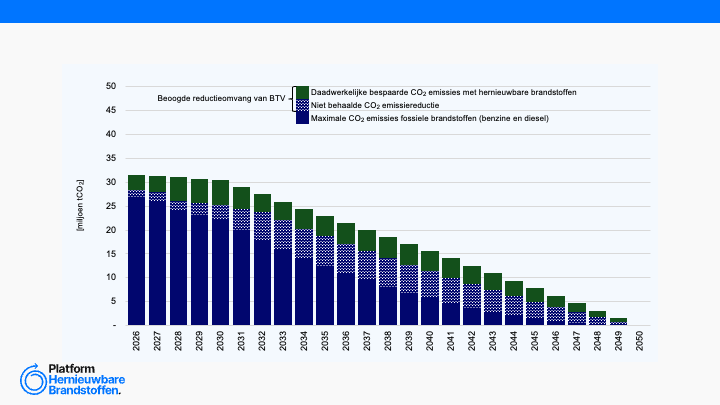SEI: Accelerating to zero: Speeding up the decarbonization of heavy-duty vehicles in the EU | 2021

12-07-2022
This 2021 report by Stockholm Environment Institute analyses technology and emissions developments in the heavy-duty road transport sector. Three greenhouse gas abatement measures are projected until 2030: combustion engine efficiency improvements, electrification and biofuel deployment. Total emissions reductions of the heavy-duty sector by these measures are modelled. These emissions reductions are compared to three greenhouse gas reduction paths: The European Fit-for-55 projections, the global IEA Net Zero by 2050 projections and the (most extreme) linear reduction to net zero by 2050 projections.

Efficiency improvements of heavy-duty combustion engines
On basis of literature, the authors identified an annual combustion engine efficiency improvement of about 2% for trucks and buses. These efficiency gains can be achieved by, amongst others:
- Engine technology improvements
- Driveline efficiency improvements
- Low rolling resistance tires
- Trailer aerodynamic devices
- Turbocharged engines
These developments alone can lead to a 6% greenhouse gas emissions reduction from 2020 to 2030 – sufficient to comply with the Fit-for-55 trajectory.
Electrification of the fleet
The switch to electric drivetrains in heavy-duty road transport is projected to be dominated by battery-electric trucks, constituting about 45 % of new sales in 2030. Fuel cell electric vehicles are only expected to enter commercial operation from 2025 onwards and grow to about 5 % of new truck sales in 2030. Nevertheless, trucks show a long operational lifetime in the fleet of 13 years on average. Furthermore, the fleet is growing annually. These factors lead to a slow penetration of electrification into the vehicle stock, despite the optimistic projections on new sales. By 2030, about 10% of the truck fleet and 15 % of the bus fleet could then be electric.
Biofuels deployment
The renewable fuels deployment is targeted by legislation, most notably under the Renewable Energy Directive. This study assumes that the mandated share of renewable fuels (14 %) is fully achieved via biofuels. The authors note that higher shares of biofuels are possible, e.g. via drop-in biofuels.
Reduction of emissions in heavy-duty transport
Combining the measures mentioned above, the study finds that an emissions reduction of 24 % is achievable until 2030. Of these 24 %, 6 % are achieved via combustion engine efficiency gains, 9 % are achieved via electrification and another 9 % are achieved via the deployment of biofuels. The Fit-for-55 scenario, on the other hand, projects a 6 % emissions reduction in heavy-duty transport in 2030. The IEA Net Zero by 2050 scenario, if adjusted for advanced economies, projects a 12 % emissions reduction in 2030. Therefore, both scenarios can be superseded largely in heavy-duty transport. However, the linear reduction path requires a 35 % emissions reduction by 2030, and thus 11 %-pt. more than the achievements projected in this study.

Recommendations
Three measures to abate greenhouse gases in heavy-duty road transport were analysed: combustion engine efficiency gains, electrification and biofuel deployment. The authors state that if one option underperforms, the others must counterbalance. For example, if the uptake of electric vehicles faces slowdowns, biofuels and efficiency improvements must be scaled up, and vice versa. The authors further note that “higher blending rates as well as extended use of drop-in fuels should be considered a priority when discussing short-term action with high impact, but fuel availability and policy mechanisms will define future limits of ambition”. They also mention that co-benefits between the use of advanced biofuels and integrated land and biomass systems in the wider bioeconomy development should be considered. Lastly, the study concludes that the contribution of the heavy-duty road sector to EU climate action can be much larger than anticipated by policymakers. However, in order to unlock this sector’s potential, “efforts should accelerate at all fronts: energy efficiency improvements, electrification via BEVs, and commercialization of FCEVs and electrofuels, as well as higher deployment rates for advanced biofuels."
The report can be downloaded using the “Download here” button to the right.
Recente artikelen
Retrospective on Lunch Seminar: Rethink strategic autonomy | December 15, 2025

Analyse brandstoftransitieverplichting

Nederlandse industrieclusters presenteren bidbook: Een basisindustrie om op te bouwen: nu & in de toekomst

